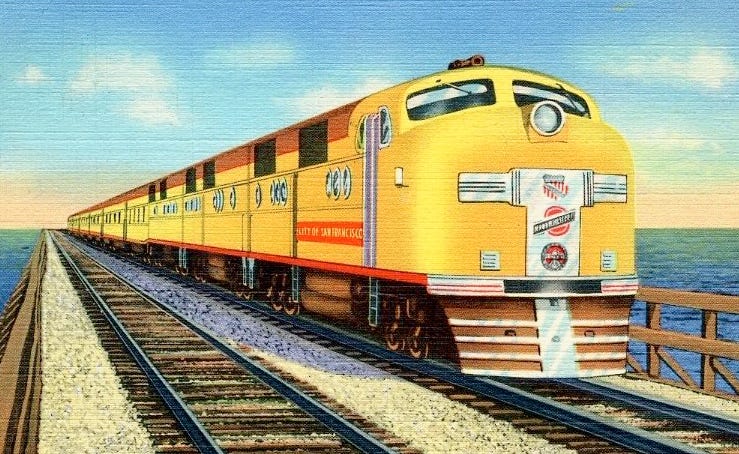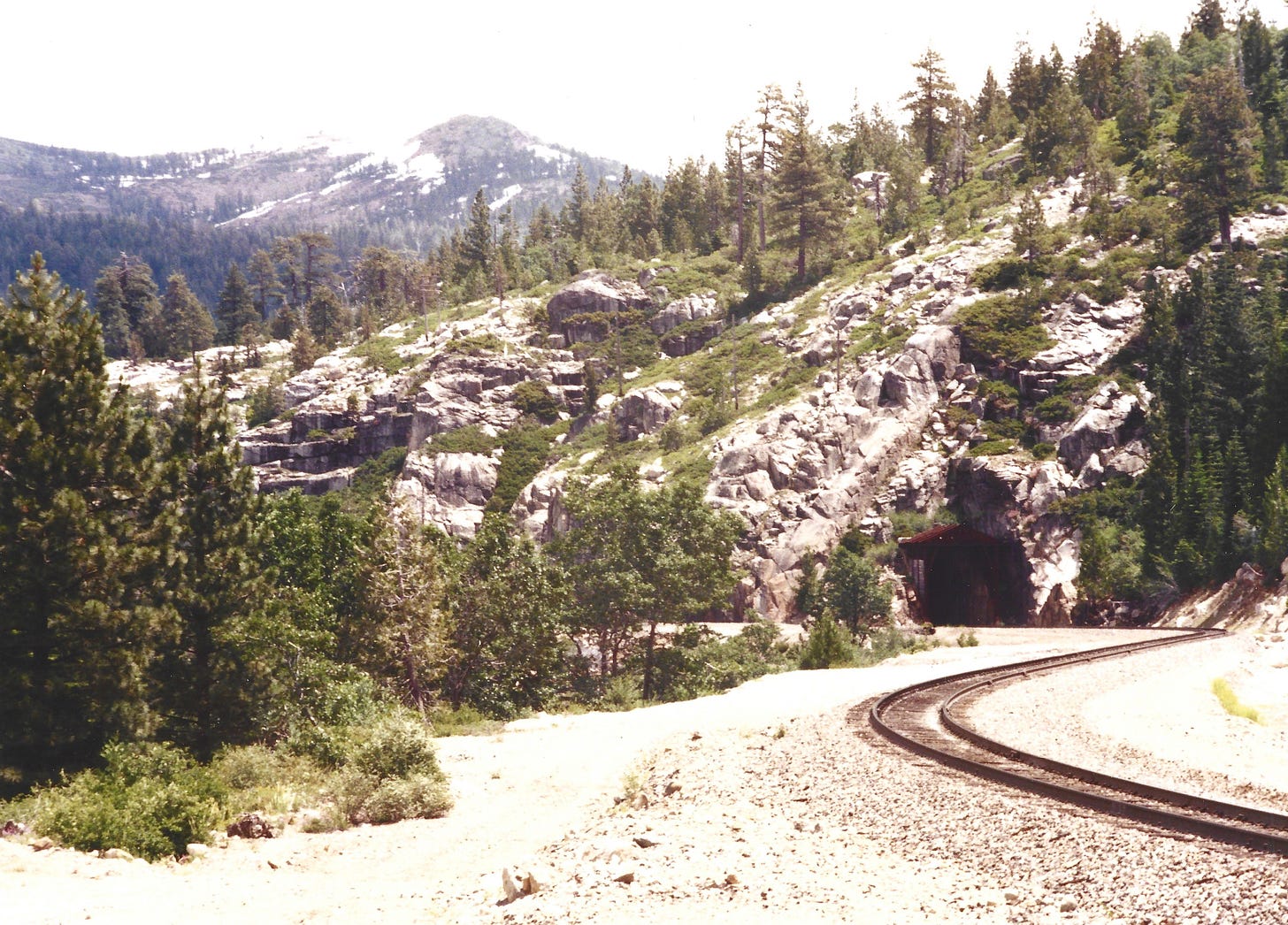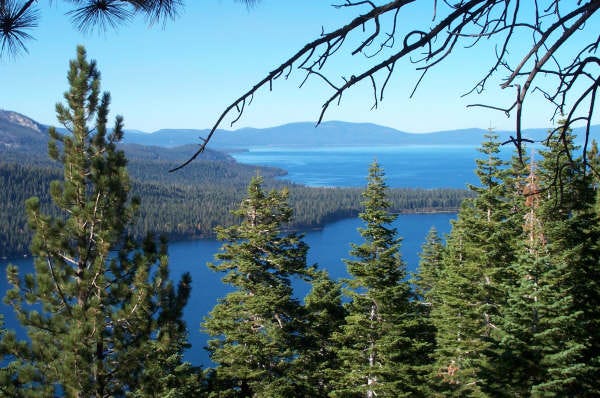Taking The Train: Salt Lake To Roseville — Part 3

Publisher’s note: There is a backstory to my March 1989 journey aboard Amtrak’s Train No. 5 and it is this. The company I was employed by at the time dispatched me to Salt Lake City, the purpose of my being there then was to receive additional work-related training. I had the option of flying; I opted instead to go by train. Tough travel choice, right?!
And now for the third and final part of the Salt Lake City-to-Roseville story.
Beyond the Reno city limits, Amtrak’s westward Train No. 5 (also known as the California Zephyr) begins its assault on the eastern approach to the great Sierra Nevada crossing. This is the same stretch where, before track was laid, during the now-infamous winter of 1846-’47 half the 80-member Donner Party perished, succumbing to the elements of the brutal cold.
We slowly made our way toward Southern Pacific’s 7,032-foot Sierra Nevada summit. It was sort of like getting a taste of what my Cal-Z predecessors experienced a generation prior.
Passing through the extreme western portion of the Silver State (Nevada), the train made its way along the Truckee River, paralleling the watercourse all the way to its namesake city. Rather than craning my neck in an effort to take in the vistas outside my window of rock-laced high canyon walls in and around the area from Verdi to Floriston, I instead decided to immerse myself in the reading materials I received coupled with my training when, over the public address system, the announcement rang out: “Next stop, Truckee”.
Sitting at just below the 7,000-foot elevation mark, Truckee is the gateway to Lake Tahoe, or, if not officially designated such, it should be. At the time, during winter months, the village served as SP’s snowfighting headquarters, the railroad called upon often to do battle with deep and, at times, unforgiving snows, all in an effort to keep the tracks clear and open to the passage of trains. Four-hundred inches or more of annual snowfall accumulating along the line at the higher elevations is not uncommon. During these times the railroad employs use of its so-called “heavy artillery,” relying on an armada of snow-removal equipment like Jordan Spreaders, flangers and rotary snowplows. I presume these snowfighting implements still make their way back and forth, in what at times appears to be in defiance of seemingly unending winter storms pummeling the mountain. Mother Nature’s effects can be outright brutal as was evident in the winter of 1952, when the famed City of San Francisco streamliner was caught in a snowdrift at Yuba Pass and was stranded for up to three full days before rescue workers could get to the passengers to free them from their nightmarish plights. Which just goes to show how a sudden snowstorm and ensuing drift can stop a train in its tracks. It’s an event that will go down in the annals of American Passenger Train History as one of the worst weather-related train ordeals on record, if it hasn’t already. That the mountain pass was covered in the white fluff down to about the 5,000-foot-level revealed to that day’s Train No. 5 patrons what the ten-day succession of powerful winter storms arriving in the area just prior to, left in their wake. What a wonderful sight to behold and something I’ll remember for the rest of my life!

Slipping through the snowshed at Norden, where offices, a cookhouse, and crew and living quarters once stood, the train passed a turntable within eyeshot of the tracks. Not only had our train made the grade as it were, but it crested the summit and seemingly effortlessly to boot.

Upon exiting, the headend power pulling the assemblage of rolling passenger carriages coupled behind, began its descent down the pass’ western slope. At various times during, the onboard tour guide pointed out items of interest such as a flume noticeable outside windows at one spot, that conveyed water westward, and Yuba Pass, where Train No. 101, the City of San Francisco of January 13, 1952, became stranded. It was at Emigrant Gap at the 5,000-foot altitude, meanwhile, that the snow cover gave way to exposed granite rock.

The remainder of the ride into the Sacramento Valley in general and Roseville in particular, was gorgeous! Absolutely breathtaking! Aloft overhead were puffy white clouds amid promising blue skies. Around Newcastle, the lush carpet of greenery that bedecked surrounding hillsides made for quite the contrast with sky above. All was right with the world and there was nothing getting in the way of CZ’s forward progress that day.
My fantastic voyage was all but over the moment the train pulled into and came to rest at the Roseville station, where, along with other passengers, I, too, disembarked. There, I was greeted by a college friend who had made the area his new home. Courtesy of my buddy, I was provided a ride back to where my car had been parked awaiting my return. Our bidding each other adieu was punctuated by a handshake, farewells and friendly smiles all around.
After the time away, it was comforting knowing that I would soon be back home.
Who’d have thought I’d ever be rendering in print that experience and posting the final edited version on this platform at this time?! Now that that’s done, and in looking back, I am oh so glad I invested the time!
This now concludes this accounting of my March 1989 Salt Lake City-to-Roseville Amtrak Train No. 5 California Zephyr journey.
Updated: Apr. 16, 2025 at 8:02 p.m. PDT.
Image credits: Bob Gries via Wikimedia Commons (2nd); Tichnor Bros, General Distributing Co. via Wikimedia Commons (3rd); Alan Kandel, all others.
All material copyrighted 2025, Alan Kandel. All Rights Reserved.




